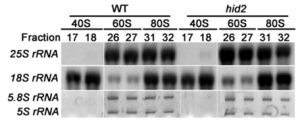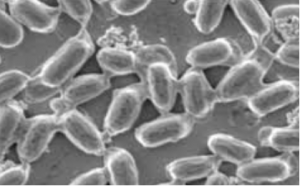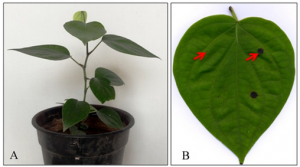|
An early secretory pathway mediated by GNOM-LIKE 1 and GNOM is essential for basal polarity establishment in Arabidopsis thaliana
Thursday, 2015/02/19 | 16:22:20
|
|
Siamsa M. Doyle, Ash Haeger, Thomas Vain, Adeline Rigal, Corrado Viotti, Małgorzata Łangowska, Qian Ma, Jiří Friml, Natasha V. Raikhel, Glenn R. Hicks, and Stéphanie Robert SignificanceWithin plants, controlled gradients of the hormone auxin are essential for development. These gradients are achieved through intracellular polar positioning of auxin transporter proteins, such as PIN-FORMED proteins (PINs), at the plasma membrane, thus guiding the direction of auxin transport. The establishment and maintenance of PIN polarity is controlled within each cell by complicated trafficking pathways of the endomembrane system. In the model plant Arabidopsis, it has long been known that endocytosis and recycling trafficking routes play roles in PIN polarity. In this study, we reveal the role of a secretory route in this process. Our evidence shows that this secretory trafficking route selectively controls basal (rootward) but not apical (shootward) PIN polarity. AbstractSpatial regulation of the plant hormone indole-3-acetic acid (IAA, or auxin) is essential for plant development. Auxin gradient establishment is mediated by polarly localized auxin transporters, including PIN-FORMED (PIN) proteins. Their localization and abundance at the plasma membrane are tightly regulated by endomembrane machinery, especially the endocytic and recycling pathways mediated by the ADP ribosylation factor guanine nucleotide exchange factor (ARF-GEF) GNOM. We assessed the role of the early secretory pathway in establishing PIN1 polarity in Arabidopsis thaliana by pharmacological and genetic approaches. We identified the compound endosidin 8 (ES8), which selectively interferes with PIN1 basal polarity without altering the polarity of apical proteins. ES8 alters the auxin distribution pattern in the root and induces a strong developmental phenotype, including reduced root length. The ARF-GEF–defective mutants gnom-like 1 (gnl1-1) and gnom (van7) are significantly resistant to ES8. The compound does not affect recycling or vacuolar trafficking of PIN1 but leads to its intracellular accumulation, resulting in loss of PIN1 basal polarity at the plasma membrane. Our data confirm a role for GNOM in endoplasmic reticulum (ER)–Golgi trafficking and reveal that a GNL1/GNOM-mediated early secretory pathway selectively regulates PIN1 basal polarity establishment in a manner essential for normal plant development.
See: http://www.pnas.org/content/112/7/E806.abstract.html?etoc PNAS February 18; vol.112, no. 7 E806-E815
Fig. 5. ES8 interferes with a PIN1 secretory pathway toward the basal plasma membrane without affecting its biosynthesis or PIN1 expression. (A and B) Basal plasma membrane (PM) fluorescence in epidermis cells of anti-PIN1 immunolocalized XVE::PIN1 roots. Quantification is expressed as a percentage of the control mock treatment in each replicate with n > 150 cells. (C) Whole-cell fluorescence recovery after photobleaching (FRAP) in stele cells of PIN1::PIN1-GFP roots with n > 6 roots. (D) Expression level of genes PIN1, PIN2, and AUX1 in Col0 seedlings. Quantification is expressed as a percentage of the control mock treatment in each replicate. (E–H) ES8-induced agglomerations in stele cells of PIN1::PIN1-GFP roots (E and F) and their inhibition by pretreatment with cycloheximide (CHX) (G and H). Quantification is calculated as the ratio of basal PM to intracellular fluorescence per cell and expressed as a percentage of the control mock treatment in each replicate with n > 150 cells. Representative images are shown. (Scale bars: 10 µm.) Arrows mark basal PM (A) or ES8-induced agglomerations (E). Values in square brackets indicate treatment concentrations in µM. Indicated treatments were significantly different to the control with P < 0.05 (*), P < 0.01 (**), or P < 0.0001 (***), as calculated using the Wilcoxon rank sum (Mann–Whitney U) test (B, F, and H) or the Student’s t test (C). Upper and lower asterisks correspond to ES8.0 and ES8.1, respectively in C. No significant differences were found between treatments in D. Error bars represent SD. |
|
|
|
[ Other News ]___________________________________________________
|


 Curently online :
Curently online :
 Total visitors :
Total visitors :
.gif)



















